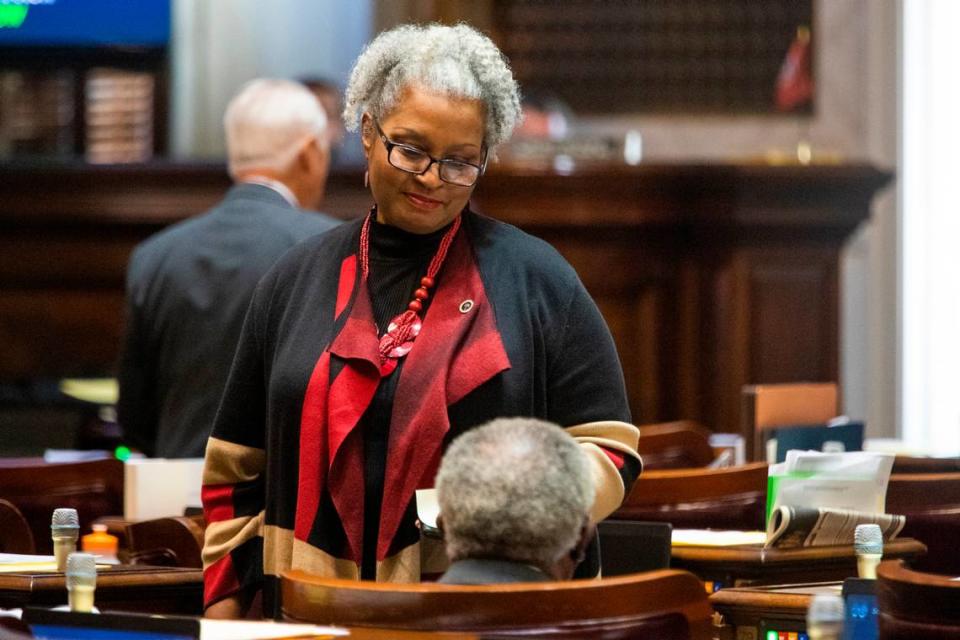Richland County will lose legislative seat after SC House passes new redistricting map
Richland County will lose a representative in the State House after lawmakers voted Thursday to adopt a new map that merges two of the county’s 12 House districts.
The plan, which has been criticized for favoring Republicans and incumbent politicians at the expense of voters, passed 96-14. It requires a final vote Monday and must then be adopted by the Senate, but those steps are considered perfunctory.
The House map, released early last month and amended in committee, is projected to give Republicans a supermajority in the House and could significantly reduce the number of competitive districts in the state. The current political makeup of the chamber is 81 Republicans to 43 Democrats.
Due to South Carolina’s explosive growth over the past decade — the state added about 500,000 people, according to the 2020 census — large-scale changes were necessary to ensure all districts had roughly the same number of people.
Among the most significant changes in the new House map is the consolidation of Districts 70 and 80 in lower Richland County, setting up a possible 2022 primary between Democratic Reps. Wendy Brawley and Jermaine Johnson.
Brawley, of Hopkins, introduced two amendments that would have modified the proposed map, but her suggestions were tabled.

She said she understood and accepted that members of the Republican majority would use their power to draw lines beneficial to themselves. What she didn’t get, Brawley said, was that Republicans would behave as though the process was actually fair and transparent.
“The districts are so gerrymandered not only to protect the incumbents that are here who are Republicans, but also to increase their numbers so significantly that it totally marginalizes the Democratic vote and it totally marginalizes the minority populations of this state,” she said Thursday on the House floor. “I just believe we can and should do better. And I would hope that we’d want to do better.”
State Rep. Jay Jordan, R-Florence, who chaired the House redistricting committee, defended the integrity of the panel’s process, saying it had gone to great lengths to ensure everything was done transparently.
“Incumbent locations were considered,” he said. “But lines were not contorted in order to protect incumbent legislators. I can say that very, very clearly.”
New House map pits incumbents against each other
While the once-a-decade redistricting process is nearly always fraught with conflict and accusations of partisan bias, critics say the House map is particularly egregious — a sign the map will likely be challenged in court.
The state’s underlying demographics make creating a truly unbiased map impossible, but the new House map is significantly more gerrymandered than even the existing imperfect map, an impartial analysis indicates.
Only nine of 124 districts are competitive, or about half as many as the current House map, according to Dave’s Redistricting app, a popular map drawing and analysis tool.
“The extremely low number of competitive districts — even at a generous ±5% standard — points toward making voters nearly obsolete in general elections for the SC House of Representatives,” the nonpartisan League of Women Voters of South Carolina wrote in its assessment of the proposal.
The House map splits roughly the same number of counties as the current one, but nearly three times as many precincts, which can create voter confusion. It has 32 majority-minority districts — two more than the current map — but actually scores lower on minority representation, according to Dave’s Redistricting.
Under the proposal, Charleston, Horry and York — three of the fastest growing counties in the state — would add seats from areas where population has increased more modestly or not at all since 2010. Richland County, on the other hand, is due to lose a seat after the merger of the two Lower Richland districts.
Ten incumbents — four Republicans and six Democrats — are drawn into districts with one another, setting up potential primaries next year, and at least two districts are left without an incumbent after their representative was shifted into a neighboring district.
State Rep. Sandy McGarry, R-Lancaster, one of the lawmakers who has been drawn into an incumbent’s district, said Wednesday she did not plan to seek reelection as a result.
Brawley, however, intends to run again, she said.
Johnson, her potential primary opponent, said he’d yet to make a decision about his political future and planned to sit down with Brawley and talk it out before doing so.
Regardless of his decision, Johnson said he had immense respect for his colleague and would not allow a potential election get between them.
“We’re not going to allow this to divide us. We’re not going to allow this to divide our community,” he said. “If it comes down to a point to where we have to decide what we’re going to do, we’re both going to sit down, we’re both going to discuss this and we’re both going to figure out a way forward.”
This is a developing story. Check back for updates.

